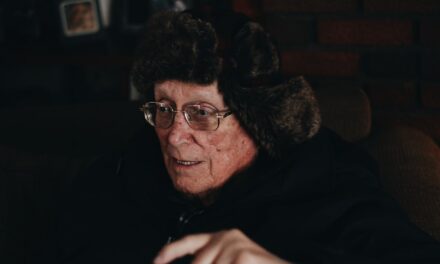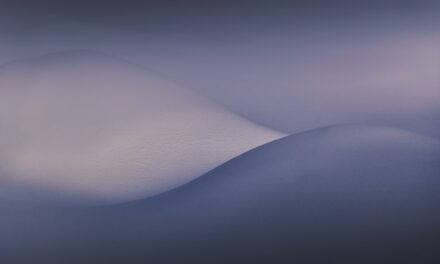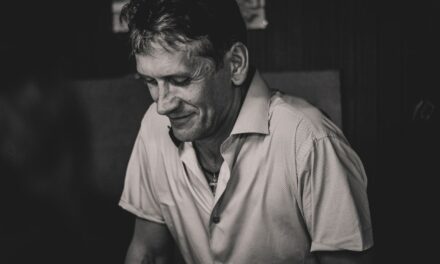Benozzo Gozzoli, born in 1420 in the vibrant city of Florence, emerged from a milieu rich in artistic innovation and cultural fervour. His early life was steeped in the Renaissance spirit, a period characterised by a revival of classical learning and a burgeoning appreciation for the arts. Gozzoli was likely introduced to the world of painting through his apprenticeship with the renowned artist Fra Angelico, whose ethereal style and spiritual themes would profoundly influence Gozzoli’s own artistic development.
This formative experience not only honed his technical skills but also instilled in him a deep reverence for the sacred subjects that dominated the art of his time. As he matured, Gozzoli’s training extended beyond the confines of his apprenticeship. He absorbed the artistic innovations of his contemporaries, including the use of perspective and naturalism that were becoming increasingly prominent in Florentine art.
His exposure to the works of Masaccio and Donatello further enriched his understanding of form and composition. By the time he began to establish himself as an independent artist, Gozzoli had developed a distinctive style that combined the spiritual depth of his early influences with a keen eye for detail and narrative. This blend would become a hallmark of his work, setting the stage for his future successes.
Summary
- Benozzo Gozzoli was born in Florence in 1421 and trained under Fra Angelico, learning the techniques of fresco painting and religious iconography.
- Gozzoli’s style was heavily influenced by the Florentine Renaissance, incorporating elements of perspective, naturalism, and classical motifs into his work.
- Notable works by Gozzoli include the frescoes in the Magi Chapel in the Medici Palace and the Journey of the Magi in the Chapel of the Palazzo Medici-Riccardi.
- Gozzoli had a close relationship with the powerful Medici family, receiving numerous commissions from them and painting portraits of family members in his works.
- Gozzoli’s paintings were primarily executed in fresco, using vibrant colours and intricate details to create rich and decorative compositions.
- Gozzoli’s legacy in Renaissance art is marked by his contributions to the development of perspective and narrative storytelling in fresco painting.
- Controversies surrounding Gozzoli’s work include criticisms of his portrayal of historical figures and the accuracy of his religious depictions.
- Gozzoli’s artwork can be viewed in various locations, including the Magi Chapel in the Palazzo Medici-Riccardi and the Church of San Fortunato in Montefalco.
Influences and style
Influences from the Masters
The vibrant colours and intricate details found in his paintings are reminiscent of the works of Botticelli, while his narrative-driven compositions echo the storytelling prowess of Giotto. One cannot overlook the impact of the Medici family on Gozzoli’s artistic evolution. The Medici were not only patrons but also trendsetters in the art world, commissioning works that showcased their wealth and power.
A Balance of Realism and Idealism
Gozzoli’s style evolved in response to their tastes, leading him to create grandiose scenes filled with elaborate costumes and rich symbolism. His ability to blend realism with idealism allowed him to capture the essence of his subjects while also appealing to the desires of his patrons. This duality is evident in works such as “The Procession of the Magi,” where Gozzoli masterfully balances intricate detail with a sense of grandeur.
Notable works and commissions
Among Gozzoli’s most celebrated works is “The Procession of the Magi,” a stunning fresco located in the Palazzo Medici Riccardi in Florence. Commissioned by Cosimo de’ Medici, this monumental piece showcases Gozzoli’s ability to weave together narrative and spectacle. The fresco depicts the journey of the Magi to pay homage to the Christ child, featuring a diverse array of figures that reflect both historical and contemporary personalities.
The intricate details, from the lavish garments to the expressive faces, invite viewers into a world where history and myth intertwine. Another significant work is “The Virgin and Child with Saints,” which exemplifies Gozzoli’s mastery of composition and colour. This altarpiece, created for the church of San Francesco in Montefalco, showcases his ability to create a harmonious balance between figures and background.
The serene expressions of the saints juxtaposed with the vibrant hues of their garments create a sense of divine presence that captivates viewers. Gozzoli’s skillful use of light and shadow further enhances the three-dimensionality of the figures, drawing attention to their spiritual significance.
The Medici family and Gozzoli’s relationship with them
The Medici family played an instrumental role in shaping Gozzoli’s career, providing him with opportunities that would elevate his status within the art world. As one of Florence’s most powerful families, their patronage was highly sought after by artists, and Gozzoli was fortunate to be among those who received their support. The relationship between Gozzoli and the Medici was mutually beneficial; while Gozzoli produced works that celebrated their power and influence, the Medici provided him with financial stability and access to prestigious commissions.
Gozzoli’s connection with the Medici is perhaps best exemplified in “The Procession of the Magi,” where he included portraits of members of the family within the fresco itself. This not only served to immortalise their likenesses but also reinforced their status as patrons of the arts. The inclusion of contemporary figures alongside biblical characters blurred the lines between sacred and secular, reflecting the Medici’s desire to be seen as both pious and powerful.
This innovative approach to patronage allowed Gozzoli to explore new artistic possibilities while simultaneously solidifying his place within Florence’s artistic hierarchy.
Techniques and materials used in Gozzoli’s paintings
Gozzoli’s technical prowess is evident in his meticulous approach to painting, which involved a combination of traditional methods and innovative techniques. He primarily worked with frescoes, a medium that required both skill and precision due to its fast-drying nature. This technique allowed him to create vibrant murals that adorned churches and palaces, capturing the attention of viewers with their dynamic compositions and rich colours.
Gozzoli’s ability to layer pigments effectively resulted in a luminosity that brought his subjects to life. In addition to frescoes, Gozzoli also employed tempera on wood for smaller-scale works, allowing for greater detail and refinement. His choice of materials was deliberate; he often used high-quality pigments derived from minerals and plants, which contributed to the vividness of his palette.
The intricate patterns found in his garments and backgrounds demonstrate not only his artistic vision but also his understanding of texture and depth. By combining these techniques with a keen eye for narrative, Gozzoli created works that resonated deeply with viewers, inviting them into a world where art transcended mere representation.
Legacy and impact on Renaissance art
Benozzo Gozzoli’s legacy is firmly entrenched within the annals of Renaissance art history, where he is celebrated for his contributions to both religious and secular themes. His ability to blend narrative with visual splendour set a precedent for future artists who sought to engage viewers on multiple levels. Gozzoli’s work exemplifies the Renaissance ideal of humanism, where individual figures are imbued with personality and emotion, allowing for a deeper connection between art and audience.
Moreover, Gozzoli’s innovative approach to composition influenced subsequent generations of artists who admired his ability to create dynamic scenes filled with movement and life. His use of perspective and attention to detail paved the way for later masters such as Raphael and Michelangelo, who would build upon these foundations in their own groundbreaking works. The impact of Gozzoli’s artistry can be seen not only in Florence but also across Italy and beyond, as his techniques were adopted by artists seeking to capture the essence of humanity within their own creations.
Controversies and criticisms surrounding Gozzoli’s work
Despite his acclaim, Gozzoli’s work has not been without its controversies and criticisms. Some art historians have argued that his reliance on elaborate ornamentation detracted from the spiritual depth often associated with Renaissance art. Critics have suggested that while Gozzoli excelled in creating visually stunning compositions, he occasionally prioritised spectacle over substance, leading to works that may lack emotional resonance compared to those of his contemporaries.
Additionally, there have been debates regarding the historical accuracy depicted in some of his works, particularly in “The Procession of the Magi.” The inclusion of contemporary figures alongside biblical characters has raised questions about Gozzoli’s intentions—was he aiming for a timeless narrative or simply catering to the tastes of his patrons? These discussions highlight the complexities inherent in interpreting Renaissance art, where personal expression often intersects with societal expectations.
Places to view Gozzoli’s artwork today
For those eager to experience Benozzo Gozzoli’s artistry firsthand, several locations across Italy house significant examples of his work. The Palazzo Medici Riccardi in Florence remains one of the most prominent sites, where visitors can marvel at “The Procession of the Magi.” This fresco continues to draw admirers from around the world, who are captivated by its intricate details and vibrant storytelling. In addition to Florence, Gozzoli’s altarpiece “The Virgin and Child with Saints” can be found in Montefalco at the Church of San Francesco.
This work exemplifies his mastery of composition and colour while offering insight into his spiritual themes. Other notable pieces can be seen in various churches throughout Tuscany, each showcasing different aspects of Gozzoli’s artistic evolution. In conclusion, Benozzo Gozzoli stands as a pivotal figure within Renaissance art history, whose contributions continue to resonate today.
His early life and training laid a strong foundation for an illustrious career marked by significant commissions and innovative techniques. Through his relationship with the Medici family, he navigated the complexities of patronage while leaving an indelible mark on subsequent generations of artists. Despite facing criticisms regarding certain aspects of his work, Gozzoli’s legacy endures as a testament to the richness and diversity of Renaissance art—a legacy that can still be appreciated in galleries and churches across Italy today.
If you are interested in exploring different art techniques, you may also enjoy reading about mastering underpainting techniques in acrylics. This article provides valuable insights into how to create a strong foundation for your paintings using underpainting methods. By understanding the importance of underpainting, you can enhance the overall quality and depth of your artwork. Check out the article here for more information.
FAQs
Who was Benozzo Gozzoli?
Benozzo Gozzoli was an Italian Renaissance painter from Florence, known for his frescoes and religious paintings. He was active during the 15th century and was a student of Fra Angelico.
What are some of Benozzo Gozzoli’s most famous works?
Some of Benozzo Gozzoli’s most famous works include the frescoes in the Magi Chapel of the Palazzo Medici-Riccardi in Florence, the Procession of the Magi in the Medici Palace in Florence, and the Journey of the Magi in the Chapel of the Palazzo Medici-Riccardi.
What was Benozzo Gozzoli’s style of painting?
Benozzo Gozzoli’s style of painting was characterized by its decorative and detailed nature, as well as its use of vibrant colors and intricate compositions. He was known for his ability to create richly detailed and lively scenes, often with a focus on religious subjects.
Where can I see Benozzo Gozzoli’s artwork today?
Many of Benozzo Gozzoli’s works can still be seen in their original locations in Italy, such as the Magi Chapel in the Palazzo Medici-Riccardi in Florence. Some of his paintings and frescoes are also housed in museums and galleries around the world, including the National Gallery in London and the Louvre in Paris.
What influence did Benozzo Gozzoli have on the Renaissance art movement?
Benozzo Gozzoli’s work had a significant influence on the Renaissance art movement, particularly in his use of perspective, composition, and attention to detail. His frescoes and paintings are considered important examples of Renaissance art and have contributed to the development of the style during that period.



